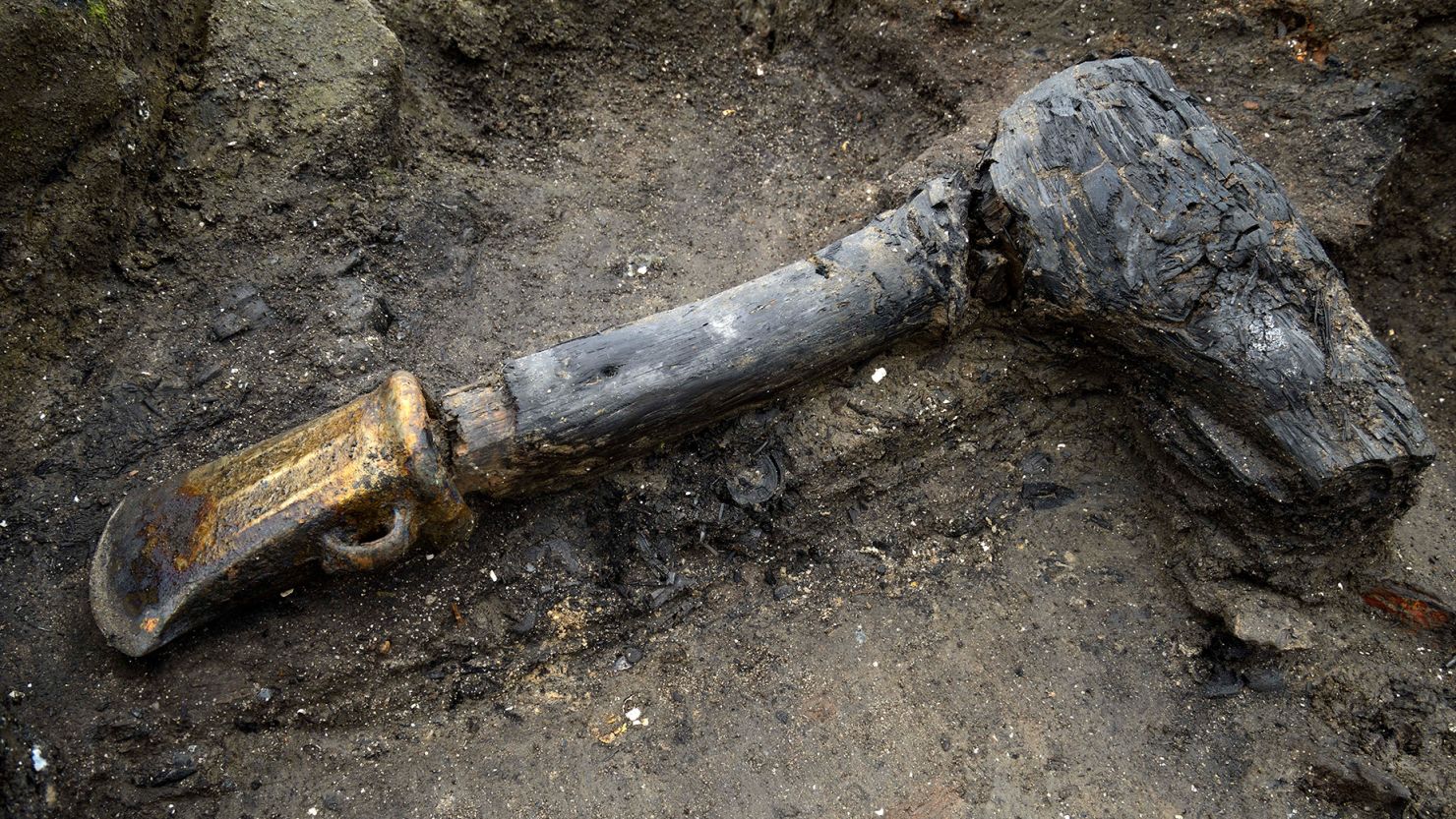Sign up for CNN’s Wonder Theory science newsletter.?Explore the universe with news on fascinating discoveries, scientific advancements and more.
It’s late summer 2,850 years ago. A fire engulfs a stilt village perched above a boggy, slow-moving river that weaves though the wetlands of eastern England. The tightly packed roundhouses, built from wood, straw, turf and clay just nine months earlier, go up in flames.
The inhabitants flee, leaving behind all their belongings, including a wooden spoon in a bowl of half-eaten porridge. There is no time to rescue the fattened lambs, which are trapped and burnt alive.
The scene is a vivid and poignant snapshot, captured by archaeologists, of a once thriving community in late Bronze Age Britain known as Must Farm, near what’s now the town of Peterborough. The research team published a two-volume monograph on Wednesday that describes their painstaking $1.4 million?(£1.1 million) excavation and analysis of the site in the county of Cambridgeshire.
Described by the experts involved as an “archaeological nirvana,” the site is the only one in Britain that lives up to the “Pompeii premise,” they say, referencing the city forever frozen in time by the eruption of Mount Vesuvius in AD 79 that has yielded unparalleled information about ancient Rome.
“In a typical Bronze Age site, if you’ve got a house, you’ve probably got maybe a dozen post holes in the ground and they’re just dark shadows of where it once stood. If you’re really lucky, you’ll get a couple of shards of pottery, maybe a pit with a bunch of animal bones. This was the complete opposite of that process. It was just incredible,” said Chris Wakefield of the Cambridge Archaeological Unit at the University of Cambridge, an archaeologist and member of the 55-person team that excavated the site in 2016.
“All the axe marks had been used to shape and sculpt the wood. All of those looked fresh, like they could have been done last week by someone,” Wakefield added.
The remarkably preserved condition of the site and its contents enabled the archaeological team to draw comprehensive new insights into Bronze Age society — findings that could overturn the current understanding of what everyday life was like in Britain during the ninth century BC.

Must Farm domesticity — and a mystery
The site, which dates to eight centuries before Romans arrived in Britain, revealed four roundhouses and a square entranceway structure, which stood approximately 6.5 feet (2 meters) above the riverbed and were surrounded by a 6.5-foot (2-meter) fence of sharpened posts.
The archaeologists believe the settlement was likely twice as big. However, quarrying in the 20th century destroyed any other remains.
Though charred from the fire, the remaining buildings and their contents were extremely well preserved by the oxygen-starved conditions of the fens, or wetlands,?and included many wooden and textile items that rarely survive in the archaeological record. Together, traces of the settlement paint a picture of cozy domesticity and relative plenty.
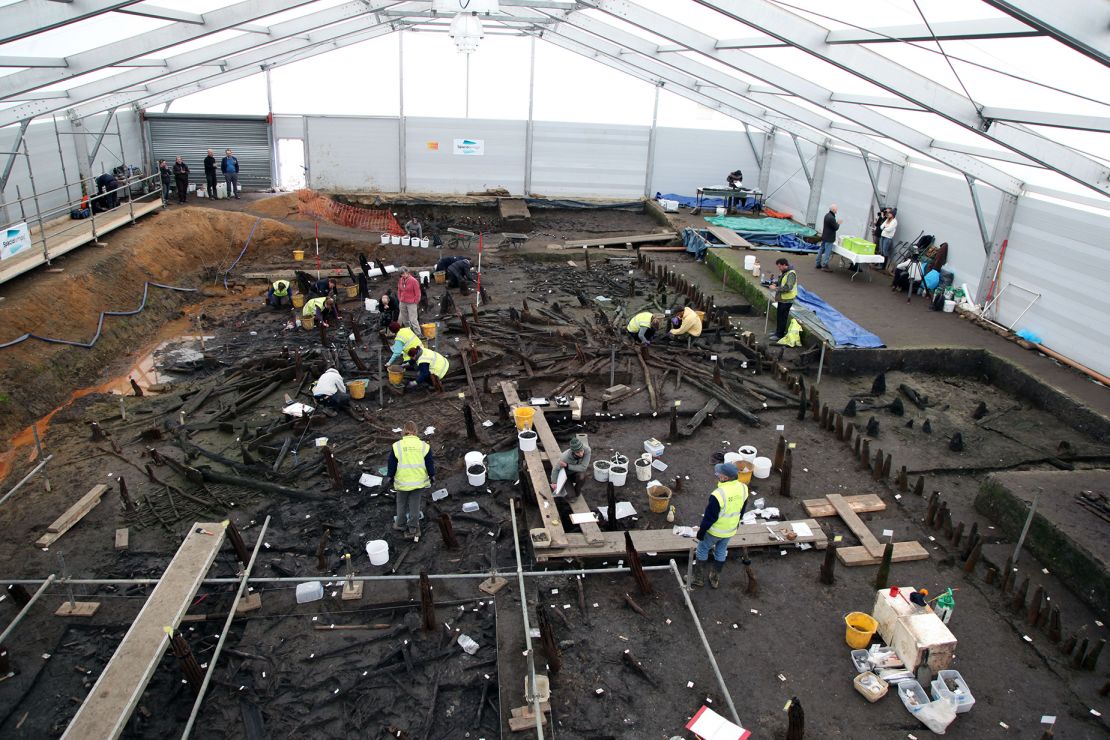
The researchers unearthed 128 ceramic artifacts — jars, bowls, cups and cookware — and were able to deduce that 64 pots were in use at the time of fire. The team found some stored pots neatly nested. Textiles found at the site made from flax linen had a soft, velvety feel with neat seams and hems, although it wasn’t possible to identify individual pieces of clothing.
Wooden artifacts included boxes and bowls carved from willow, alder and maple, 40 bobbins, many with threads still attached, various tools, and 15 wooden buckets.
“One of those buckets … on the bottom of it were loads and loads of cut marks so we know that people living in that Bronze Age kitchen when they needed an impromptu chopping board, were just flipping that bucket upside down and using that as a chopping surface,” Wakefield said.
“It’s those little moments that build together to give a richer, fuller picture of what was going on.”
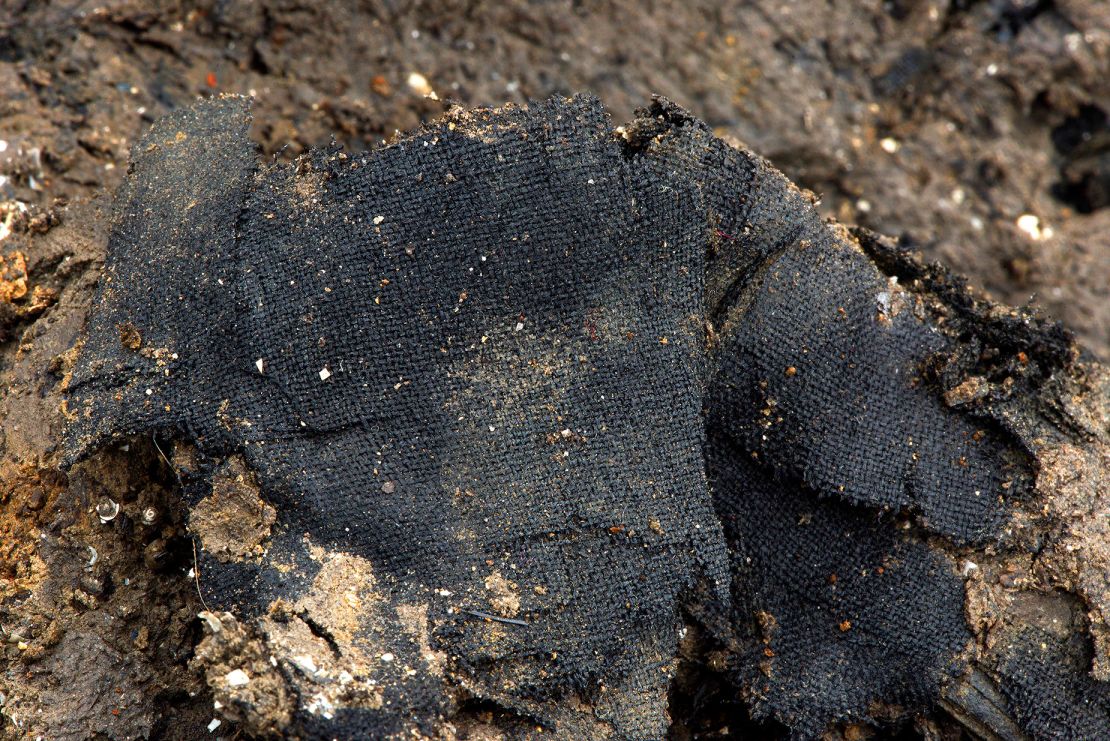
The circumstances of the event that brought it all to a halt are still a bit of a mystery. The researchers believe the fire took place in late summer or early autumn because skeletal remains of the lambs kept by one household showed the animals, typically born in spring, were three months to six months old.
However, what exactly caused the devastating fire remains unclear. The blaze could have been accidental or deliberately started. The researchers uncovered a stack of spears with shafts over 10 feet (3 meters) long at the site, and many experts think that warfare was common in the time period. The team worked with a forensic fire investigator but ultimately couldn’t identify a specific “smoking gun” clue pointing to the cause.
“An archaeological site is a lot like a jigsaw puzzle. At a typical site you have 10 or 20 pieces out of 500,” Wakefield said.?“Here we had 250 or 300 pieces and we still couldn’t get the complete picture on how this big fire broke out.”
Mike Parker Pearson, a professor of British later prehistory at the Institute of Archaeology at University College London, described both the report and the site “as exceptional.” He wasn’t involved in the research.
“The fire may have been disastrous for the inhabitants but it is a blessing for archaeologists, a unique snapshot of life in the Bronze Age,” he said via email.
Upending ideas about Bronze Age society
The contents across the four preserved houses were “remarkably consistent.” Each one had a tool kit that included sickles, axes, gouges and handheld razors used to cut hair or cloth. With almost 538 square feet (50 square meters) of floor space in the largest, each of the dwellings appeared to have distinct activity zones comparable to rooms in a modern home.
“By plotting the positions of all these finds — pots, loomweights, tools and even sheep droppings, the archaeological team have reconstructed the houses’ internal use of space,” Parker Pearson noted. “The kitchen area was in the east, the storage and weaving area in the south and southeast with the penning area for lambs, and the sleeping area in the northwest, though we don’t know where the doorway was for each house.”
Not all the items were of practical use, such as 49 glass beads plus others made of amber. Archaeologists also unearthed a woman’s skull, smooth from touch, possibly a keepsake of a lost loved one. Some of the items the researchers found will go on display starting April 27 in an exhibition titled “Introducing Must Farm, a Bronze Age Settlement” at the Peterborough Museum and Art Gallery.
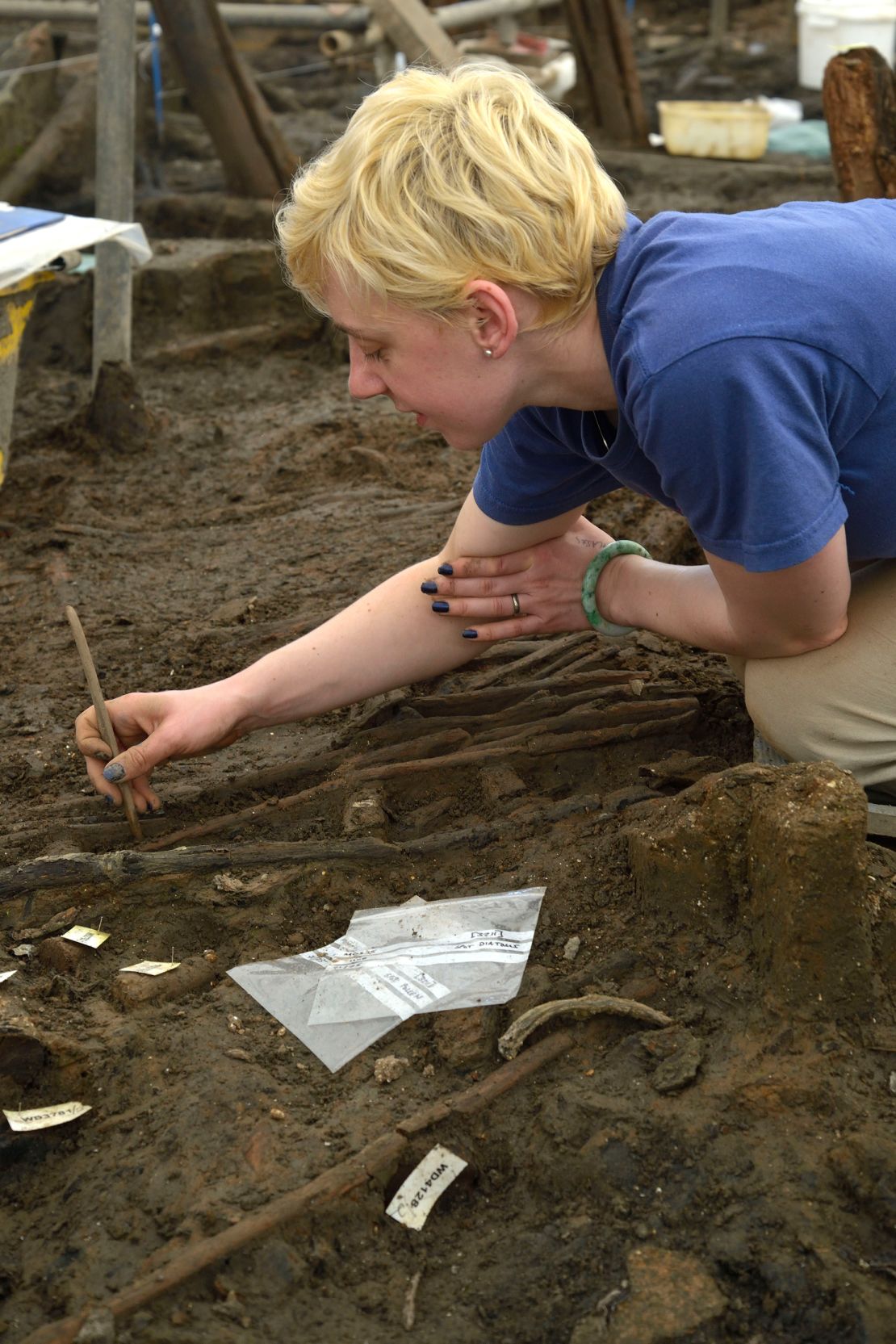
Lab analysis of biological remains revealed the types of food the community once consumed. A pottery bowl imprinted with the finger marks of its maker held a final meal — a wheat grain porridge mixed with animal fat. Chemical analyses of the bowls and jars showed traces of honey along with deer, suggesting the people who used the dishes might have enjoyed honey-glazed venison.
Ancient excrement found in waste piles below where the houses would have stood showed that the community kept dogs that fed on scraps from their owners’ meals. And human fossilized poop, or coprolites, showed that at least some inhabitants suffered from intestinal worms.
The waste piles, or middens, were one line of evidence that showed how long the site was occupied, with a thin layer of refuse suggesting the settlement was built nine months to a year before it went up in flames. Two other factors supported that line of reasoning, Wakefield said.
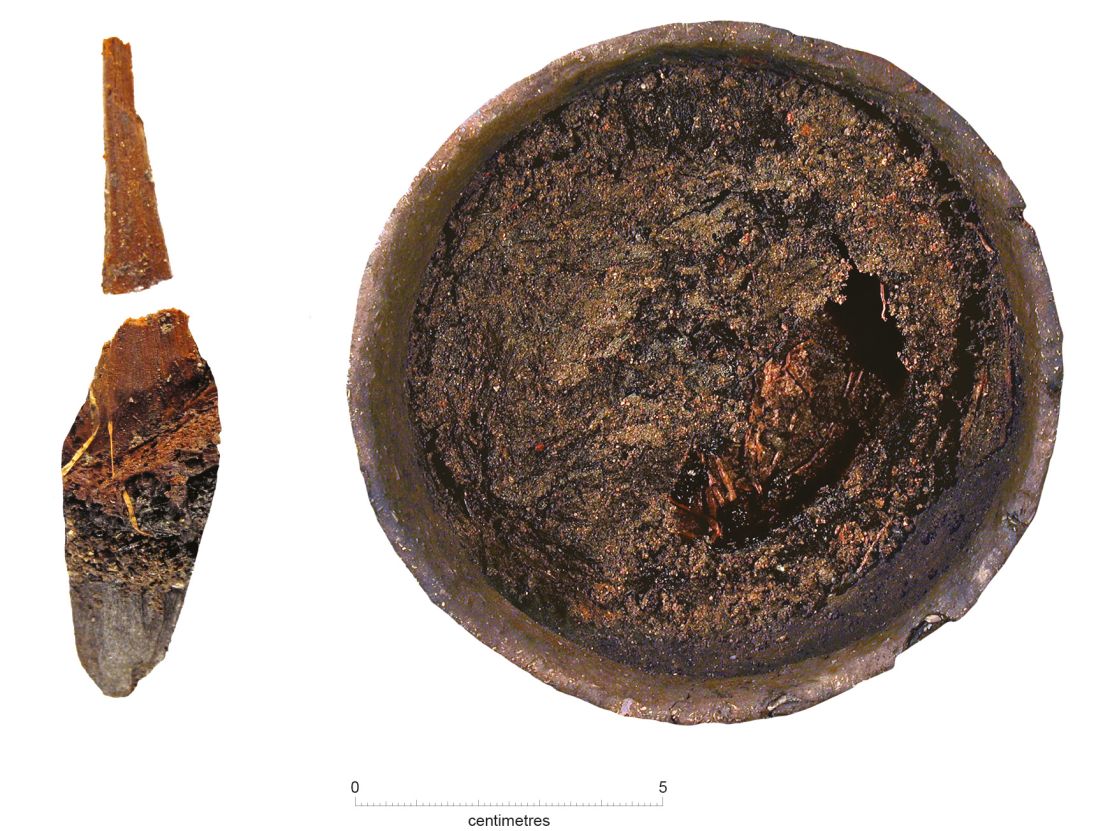
“The second was that a lot of the wood that was used in the construction was unseasoned, it was still effectively green, it hadn’t been long in position,” he said.
“The third one is that we have a lack of the kind of insects and animals that are associated with human habitation. It wouldn’t be long before beetles would worm (in) … but there’s no evidence of any of that in any of the 18,000 plus timbers.”
The fact that the site, with its rich and varied contents, was in use for only a year upended the team’s preconceived “visions of everyday life” in the ninth century BC and may suggest that Bronze Age societies were perhaps less hierarchical than traditionally thought, according to the 1,608-page report.
“We are seeing here not the accumulation of a lifetime, but just a year’s worth of materials,” the authors noted in the report. “It suggests that artefacts such as bronze tools and glass beads were more common than we often imagine and that their availability may not in fact have been restricted.”



